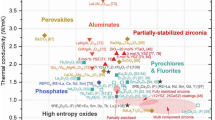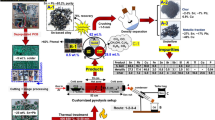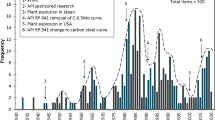Abstract
Electrochemical ion migration (ECM) can be generated by the electrochemical reaction between the anodic and cathodic electrodes of an electric circuit in the case of temperature, humidity and applied voltage. ECM can finally induce a malfunction of electronics due to precipitation of metallic ions in the cathode. In this work, we study the failure mechanism based on the identifying stress factor of ECM to occur and the accelerated life prediction of ECM occurrence. The modified Eyring model, which includes a stress model (temperature, humidity and voltage), is utilized to accelerate the life prediction of ECM. To obtain the temperature and humidity coefficient factors of ECM failure, an accelerated life test is conducted with a more than 50% failure of five types of test conditions, namely, 85°C/75% RH, 65°C/85% RH, 85°C/85% RH, 75°C/85% RH and 85°C/95% RH. The failure criterion of insulation resistance between the conductors is less than or equal to 107 Ω. In situ monitoring of surface insulation resistance is performed throughout the temperature-humidity-bias tests for over 2600 h. From these results, we deduce the temperature and humidity coefficients of the acceleration model for predicting ECM time-to-failure in electroless nickel-immersion gold (ENIG) surface finish conductors covered with a solder mask. In addition, the electrochemical oxidation and reduction mechanisms of ECM are examined by physics-of-failure. Finally, we predict the B10 life for ECM to occur on a FR-4 printed circuit board with an ENIG surface finish in use environment.
Similar content being viewed by others
References
T.X. Liang, Y.Q. Liu, Z.Q. Fu, T.Y. Luo, and K.Y. Zhang, Thin Solid Films 473, 247 (2005).
T. Takemoto, R.M. Latanision, T.W. Eagar, and A. Matsunawa, Corros. Sci. 39, 1415 (2009).
B.-I. Noh, J.W. Yoon, W.S. Hong, and S.B. Jung, J. Electron. Mater. 38, 902 (2009).
IPC-TM-650 2.6.13, Assessment of Susceptibility to Metallic Dendritic Growth: Uncoated Printed Wiring (Northbrook, IL: The Institute for Interconnecting and Packaging Electronic Circuits, 1985), pp. 1–2.
IPC-TR-476A, Electrochemical Migration: Electrically Induced Failures in Printed Wiring Assemblies (Northbrook, IL: The Institute for Interconnecting and Packaging Electronic Circuits, 1997), pp. 1–15.
E.W. Kimble, Accelerated vs. real time aging tests, in IEEE Proceedings of Reliability and Maintainability Symposium (1980)
IPC-9201, Surface Insulation Resistance Handbook (Northbrook, IL: The Institute for Interconnecting and Packaging Electronic Circuits, 1990), pp. 3–48.
R.L. Iman, D.J. Anderson and R.V. Burress, Evaluation of Low-Residue Soldering for Military and Commercial Applications: A Report from the Low Residue Soldering Task Force, Sandia National Labs. (1995), pp. 101–105.
JIS-Z-3197, Testing Methods for Soldering Fluxes (Japanese Industrial Standard, 1999).
K. Suganuma, Lead-Free Soldering in Electronics (New York: Marcel Dekker Inc., 2004), pp. 219–238.
G. Harshnyi, IEEE Trans. Compon. Packag. Manuf. Technol. (A) 18, 3 (1995).
C. Zhang, P. Yalamanchili, M. Al-Sheikhley, and A. Christou, Microelectron. Reliab. 44, 1323 (2004).
R. Howard, IEEE Trans. Compon. Hybrids Manuf. Technol. 4, 520 (1981).
B. Rudra, M. Pecht, and D. Jennings, IEEE Trans. Compon. Packag. Manuf. Technol. (B) 17, 269 (1994).
K. Sauter, Electrochemical Migration Testing Results— Evaluating PCB Design, Manufacturing Process, and Laminate Material Impacts on CAF Resistance, IPC Technical Review (Northbrook, IL: The Institute for Interconnecting and Packaging Electronic Circuits, 2001)
M. Zamanzadeh, Y.S. Liu, P. Wynblatt, and G.W. Warren, J. Sci. Eng. Corros. 45, 643 (1989).
G.W. Warren, P. Wynblatt, and M. Zamanzadeh, J. Electron. Mater. 18, 339 (1989).
A. Hornung, in Proc. Electronic Components Conf. (1968), p. 250.
E. Bumiller and C. Hillman, A Review of Models for Time-to-Failure Due to Metallic Migration Mechanisms, White Paper (https://www.dfrsolutions.com/hubfs/Resources/services/Review-of-Models-for-Time-to-Failure-Due-to-Metallic-Migration-Mechanisms.pdf). Accessed 20 July 2019
Author information
Authors and Affiliations
Corresponding author
Additional information
Publisher's Note
Springer Nature remains neutral with regard to jurisdictional claims in published maps and institutional affiliations.
Rights and permissions
About this article
Cite this article
Hong, W.S., Oh, C. Lifetime Prediction of Electrochemical Ion Migration with Various Surface Finishes of Printed Circuit Boards. J. Electron. Mater. 49, 48–58 (2020). https://doi.org/10.1007/s11664-019-07595-8
Received:
Accepted:
Published:
Issue Date:
DOI: https://doi.org/10.1007/s11664-019-07595-8




